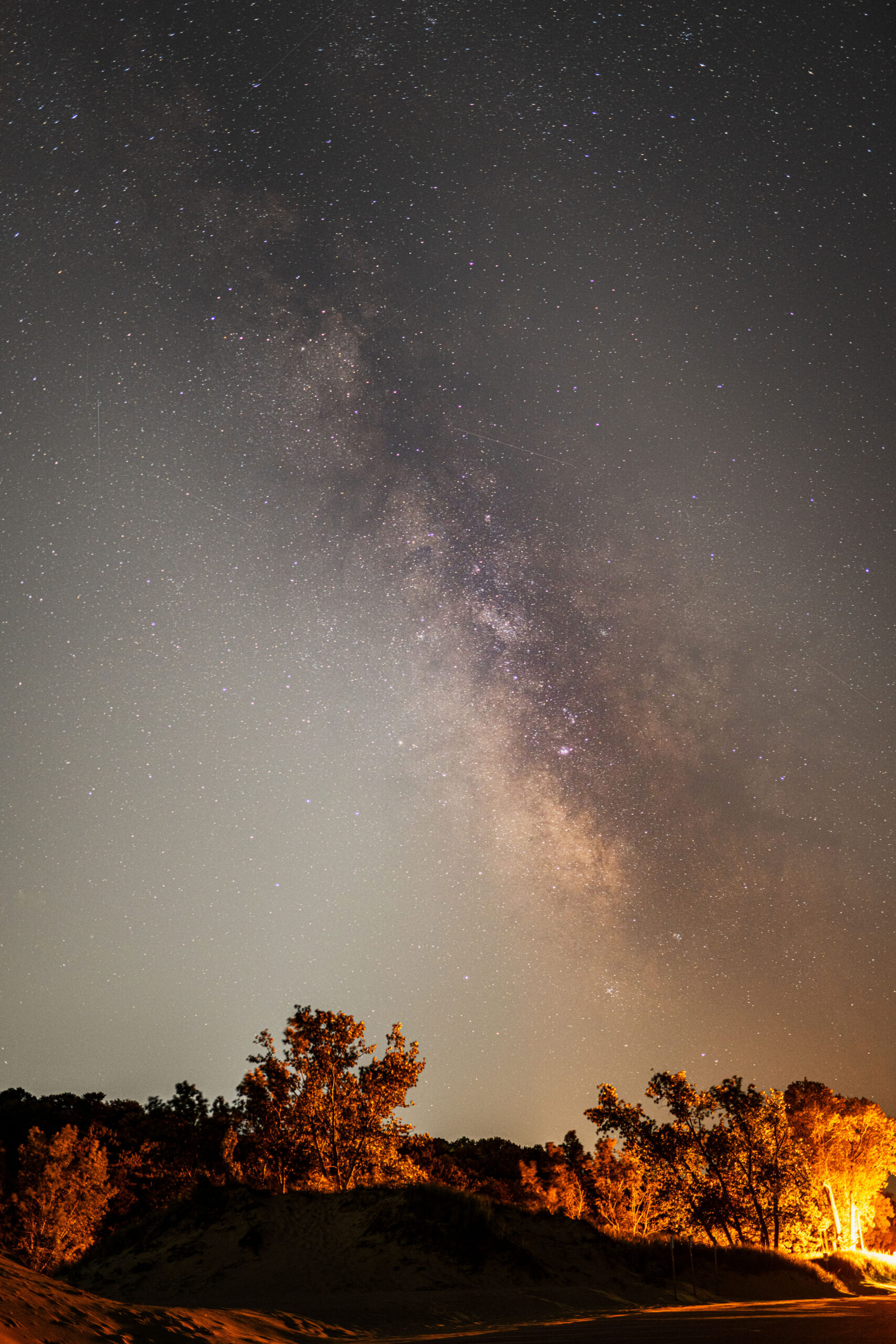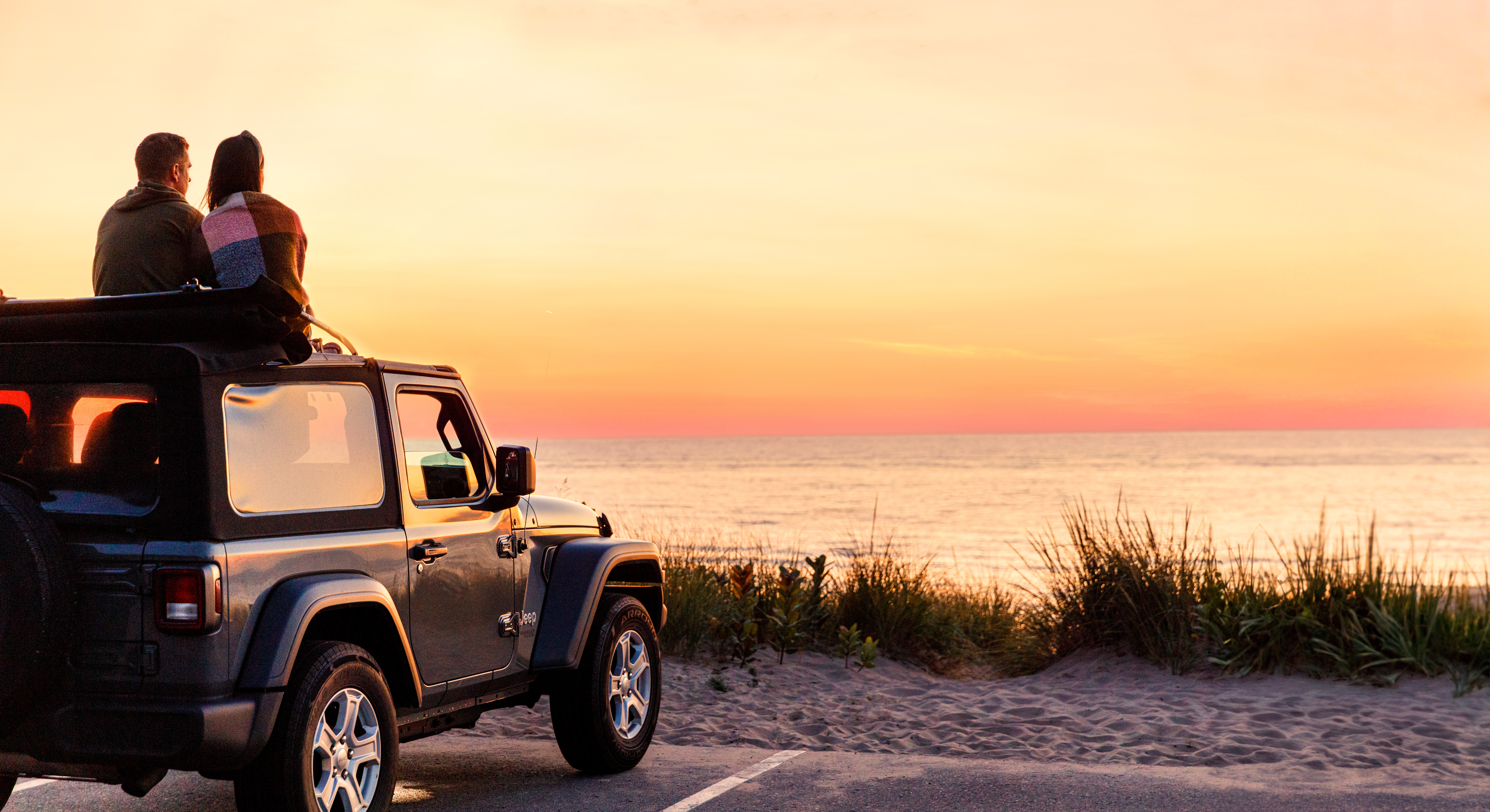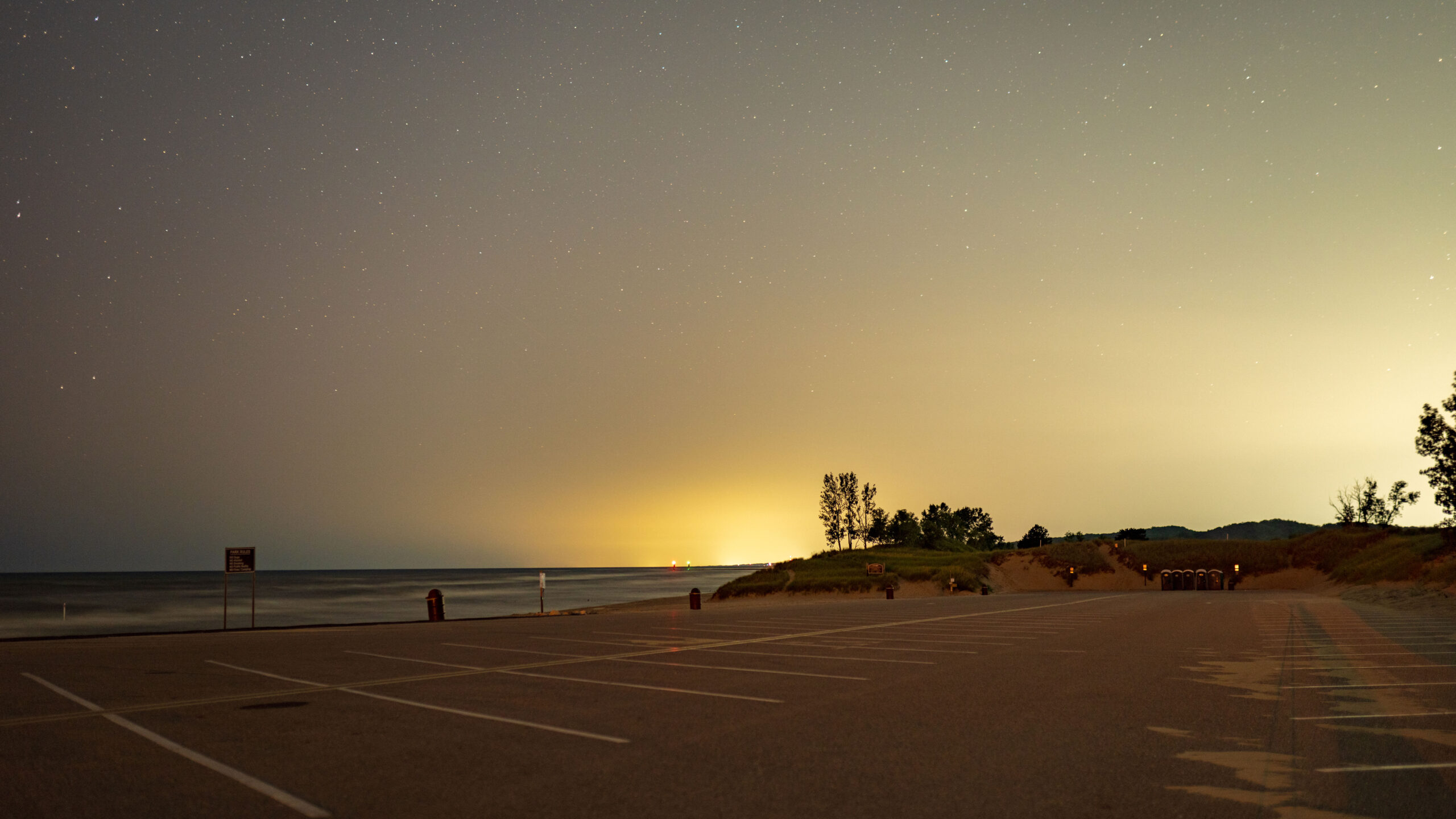Starry, Starry Night
There’s nothing more mysterious and awe-inspiring than a dark sky blanketed in stars. But for many, the night’s celestial wonders are concealed by urban light pollution. While there are designated dark-sky preserves across the country, you don’t need to travel far to bask in the beauty of a starry night. Along the Art Coast, you’ll find many places to view meteor showers, supermoons, constellations, and more.

Where to Go
When planning a stargazing trip to Saugatuck/Douglas, you’ll want to stay somewhere off the beaten path, with no streetlights illuminating the darkness. One of our favorite places to recommend is Fennville, a small lakeshore town just a few miles south of Saugatuck/Douglas. Many vacation rentals are tucked along the lake, including those from Bella Vita Vacation Rentals, Unsalted Vacations, and Vacasa Rentals. Bring your telescope and set up your stargazing shop in the backyard or even on one of the docks.
If you’re looking for a more natural vantage point, the Saugatuck/Douglas area has many parks and hiking trails ideal for stargazing. Check out West Side County Park and Hutchins Lake in Fennville, especially if you have access to a boat. In Saugatuck/Douglas, Pier Cove Beach, Oval Beach, and the Crow’s Nest Overlook in the Tallmadge Woods Nature Preserve are ideal for spotting constellations and shooting stars. Just be mindful that some of these parks have specific hours of operation and may be better for stargazing in the fall and winter months.



What to Look For
When you head out on your nighttime adventure, you only need a stargazing app on your phone, such as Star Walk 2 or Skyview Lite. These free apps contain vast databases of stars, planets, asteroids, and even satellites and can help you find all sorts of night-time wonders.
Constellations
There are 88 recognized constellations covering the entire northern and southern skies. And while you can see some, like the Little Dipper, all year, others depend on the season. If you have a stargazing app, use the camera on your phone to project the following constellations onto the sky for easy identification:
| Winter | Spring | Summer | Fall |
|---|---|---|---|
| Orion | Taurus | Scorpius | Cygnus |
| Gemini | Leo | Sagittarius | Pegasus |
| Virgo | Pisces |
Northern Lights
If you’re in town on a clear winter night, you might glimpse these colorful lights caused by electrically charged particles from the sun. Be sure to look north, toward the closest pole, between September and early April.
Meteor Showers
West Michigan is an excellent spot for watching a meteor shower, with events happening nearly every month. You don’t even need expensive equipment to see the show. Just lie down flat on your back and stare up at the sky.
January – Quadrantids
April – Lyrids
May – Eta Aquarids
July – Delta Aquarids
August – Perseids
Early October – Draconids
Late October – Orionids
November – Leonids
December – Geminids
Super Moons
In 2024, the best time to spot supermoons will be September and October. This phenomenon occurs when the Moon’s orbit is closest to Earth while the Moon is full. The result is a supermoon that appears brighter and larger than usual.
How to Help
City dwellers out there are likely familiar with the concept of light pollution. Human-made light sources affect naturally occurring outdoor light levels. The impact on wildlife, human health, and even climate change is so concerning that organizations like DarkSky International are working with local communities to mitigate the effects of light pollution and establish Dark Sky Places worldwide. You can help, too, by participating in events like Dark Sky Week, April 2-8. It’s a great time to stargaze and help the organization promote the negative impact of light pollution.
Banner photo: Reece LaPerriere



